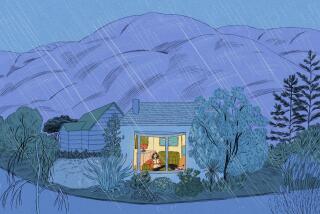Taking Road to Recovery After Riding in Fast Lane
- Share via
Life Without Friends by Ellen Emerson White (Scholastic: $12.95 hardcover)
On the surface, it seems that Beverly Johnson has it all. The 17-year-old daughter of a tenured professor at Harvard, she’s brilliant, beautiful and witty. But only a few pages into this novel we learn that the heroine of Ellen Emerson White’s hardcover debut for young adults is deeply disturbed.
Beverly’s mother perished in an automobile accident several years before--a suspected suicide. Now, Beverly lives in Boston with her father, his young second wife, Maryanne, and their little boy, Oliver. From the day she joined them she felt like an outsider; her father and mother had been divorced several years before her mother’s death.
Beverly is, by nature, shy, aloof, bookish. She’s intimidated by all the happy, normal-seeming kids at her new prep school in Boston, kids whom she describes as coming from “two, three children-BMW families” and whose worst traumas have been merely the “chic” divorces of their parents.
Fast-Lane Maneuvers
Then, good-looking, Porsche-driving Tim Connors befriends her and eases her loneliness. Beverly, however, is emotionally unequipped to handle Tim’s fast-lane maneuvers and soon finds herself head over heels in sex and drugs. Her ride in the fast lane comes to a crashing halt when Tim turns out to be a psychotic bully and, finally, a murderer.
This all might sound far-fetched and melodramatic, but the author is sensitive to craft rather than to sensationalism, and so Beverly’s story begins in medias res , after Tim’s trial is over. The murders thus become less important than the psychological recovery of the would-be next victim--Beverly.
After Tim’s true character is revealed, Beverly is spurned by her classmates, who see her as an accomplice because she kept silent. Over and over Beverly asks herself why she didn’t blow the whistle on her crazy boyfriend when she first suspected his malevolence. After the trial she discovers one reason why: Without Tim, she faces a “life without friends” and discovers the abject loneliness that is at the heart of all failures to communicate.
Funny New Boyfriend
Luckily she’s surrounded by folks who care: a taciturn yet genuinely concerned father, a cheerful, downright saintly stepmother (whom Beverly jeers as “a doormat”), a patient therapist, Dr. Samuels, and--wonder of wonders--a spirited, funny new boyfriend named Derek who is tenderhearted through thick and thin
He’s the kind of boyfriend most 17-year-old girls only dream of having, truly a Prince Charming who more or less kisses and cajoles Beverly back to life. Yet Derek’s no fairy tale hero. He smells of cut grass and cigarettes and has enough family problems of his own to give him dimension beyond his role as rescuer. He becomes Beverly’s sounding board, the comic foil to her grief. And because her father grows to trust and respect him, Derek serves as a kind of ambassador of love. He bridges the communication gap that has, for many reasons, widened between Beverly and her father.
“Life Without Friends” has a lucid, upbeat style. Occasionally the dialogue suffers from a ho-hum call-and-response routine (“But I have to go right home.” “So I’ll walk you.” “Yeah, but--” “Gotta go,” he said. “See you out in front.” “Um, okay,” she said). I know kids really talk this way, but it can be boring on the page. It’s especially tedious to read when elsewhere the characters entertain you with comments like, “If you plant Chunky Vegetable, it’ll grow.”
Hope and Despair
To write well about adolescent travail requires a sensibility that honors frankness, humor, and doesn’t squander pity. And although the characters are very young and often lack both wisdom and experience, they must never be rendered as slight. They have arrived at a juncture in life where feelings of both hope and despair are most intense.
White writes with obvious and admirable sympathy for this dilemma. The lives of the young people she portrays are complex; their happiness dug for like buried treasure. She’s to be commended for the subtle optimism she brings to bear on the shaky prospect of a laconic, self-abusive teen - ager’s reformation. “Life Without Friends,” though often harrowing in its scrutiny of contemporary adolescence, is a plucky, heartening novel.
More to Read
Sign up for our Book Club newsletter
Get the latest news, events and more from the Los Angeles Times Book Club, and help us get L.A. reading and talking.
You may occasionally receive promotional content from the Los Angeles Times.










